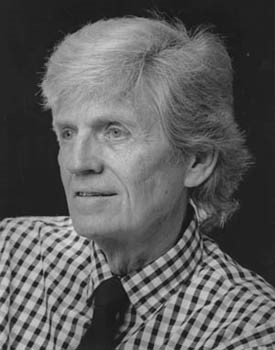Duane Hanson
Sculptor

1925 - 1996
Inducted in 1992
Biography
A leading figure in contemporary sculpture, Duane Hanson adopted South Florida as his home in 1965. The style Hanson called "superrealism" produced a long series of life-sized sculptures of ordinary people in stunning detail. Hanson's work caught the attention of the art world in the 1960s and drew both high praise and stinging criticism from other artists and the public at large.
A native of Alexandria, Minnesota, Hanson began his formal art training at Luther College in Decorah, Iowa. In 1944 he transferred to the University of Washington in Seattle where he was an art major for a year before returning to his home state and graduating from Macalaster College in St. Paul in 1946. He subsequently earned a master's degree in fine art from Cranbrook Academy of Art in Bloomfield Hills, Minnesota.
Hanson moved to West Germany in 1953, teaching art in Munich for four years and in Bremerhaven for another three. It was in Germany that he began experimenting with a variety of media and styles.
Just as the art world was being revolutionized by the pop art movement, Hanson returned to the U.S. in 1960. Influenced by pop art sculptor George Segal, whose work featured life-sized figures, Hanson soon developed his own distinctive style. Like Segal, he used real models as casts for his work, but instead of using plaster as his primary medium, he used fiberglass, resin, car-body filler and even bronze. He made his figures stunningly lifelike, even with skin that showed veins and blemishes, and Then he dressed them in real clothing, hair, accessories, tools or any other object that added realism to the final work.
Hanson's first years as a "hyper-realistic" sculptor brought him fame but also heavy criticism because of his dark themes. He created a series of graphic tableaux inspired by social unrest and its causes, including racism, a national controversy on abortion and the Vietnam War.
By 1970, Hanson had moved into more benign themes that featured ordinary individuals going about their daily routines. His portrayal of predominantly lower middle class people engaged in mundane activities was Hanson's commentary on American consumerism and the empty lives that it can bring. Themes of materialism, tastelessness and narrow-mindedness in American society colored all his work through the 1970s and the ‘80s.
To great acclaim, a retrospective of Hanson's work first toured Europe in 1974 and the U.S. in 1976. The Corcoran Gallery in Washington, D.C. put together a one-man show of his work in 1978, as did the Whitney Museum of American Art in New York City in 1979. Up until his death, Hanson created figures that challenged popular ideas related to prejudice and social class. He died in Boca Raton in 1996.

